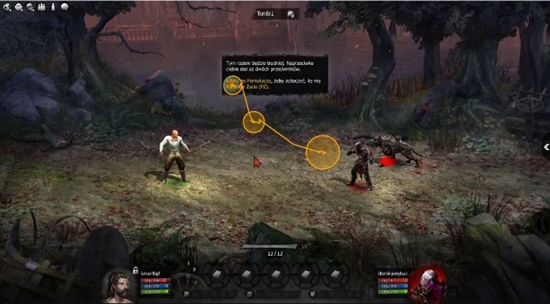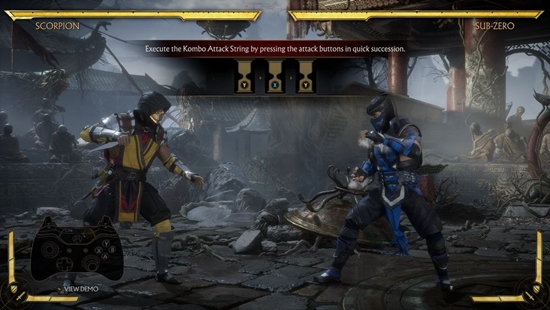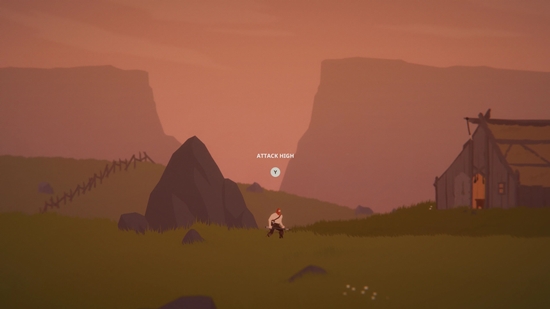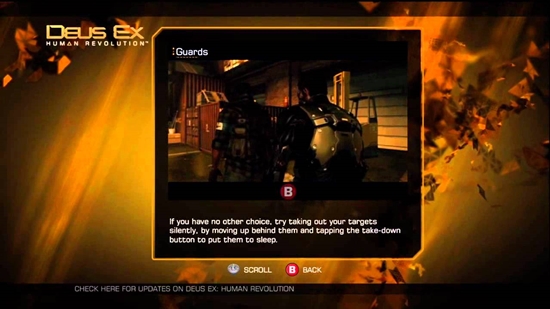How to design a perfect game tutorial?
- May 19, 2021
- Karolina Cieślak
- From Try Evidence experience, we observe the following:
- 1. Embed the tutorial into the game
- 2. Introduce new mechanics gradually
- 3. Teach how to play, not how to read
- 4. Provide 5 to 9 pieces of information - no more
- 5. Be brief
- 6. Don't be afraid to point your finger
- 7. Let's get back to the clues
- 8. Remember - players need a sense of meaning
The tutorial is a very important part of any game. It allows players to get familiar with game mechanics and immerse themselves in a new universe. Thereby, the tutorial can be extremely important for the player’s decision whether they want to continue playing after the first contact with a new game. So; how to create a perfect game tutorial?
Surely, many of you have heard about the “primacy effect“. The first information we receive about something – for example a new game – is a reference point for all further information. This means that the first contact with the game and the beginning of its gameplay have great influence on the general opinion made about the new game by the player.
From Try Evidence experience, we observe the following:
Tutorial design is one of the biggest challenges in the research projects conduted by Try Evidence. We often study the first time experience of games at various stages of their production. It’s very important, because if players don’t understand game rules, they can easily get discouraged.
An example of such project could be Broken Ranks, an MMORPG game by Whitemoon Games studio from Wrocław. One of its biggest distinguishing features, according to players, is undoubtedly the turn-based and time-limited combat system. The player’s task is to distribute appropriate attacks and skills within 30 seconds, and then invest action points in them. The more points assigned to a given activity, the greater the chance that the given action will be successful. However, this was counterintuitive for players who thought that the points increase the power of the attack. The players felt lost during the battle and they didn’t know what would be the order of the attacks, or what effects they can expect from the selected skills. Our interviews and analysis of eyetracking data allowed us to find the root of these problems. After taking into account our suggestions, the rating of combat tutorial changed from rather poor to rather good. All the difficulties encountered by players during the second round of the playtests were associated just with technical problems – not the tutorial.

George Fan, main designer of Plants vs. Zombies and developers of Rogue Legacy present an interesting approach to designing game tutorials. Celia Hodent also gives the universal rules on designing tutorials in her book – Gamer’s brain. Considering these tips and the experience we have gained in Try Evidence while working with many games in production, we have made a list of tips that will help you to design a perfect game tutorial.
1. Embed the tutorial into the game
The tutorial should be blended into the plot and even be masked by it. Developers of Rogue Legacy apply this rule into their game by blending elements of the tutorial into the characters’ dialogues. Thanks to that, the player from the very beginning feels that the actual game has already began. It helps players to avoid frustration of having to wait for the actual anticipated game to finally start”
2. Introduce new mechanics gradually
At the very beginning you should present only the basic mechanics and only later introduce more complicated ones. This method allows you to avoid overloading the player with too much information, among which it’s easy to get lost (and discourage from playing on). For example – in Mortal Kombat 11 we start with the absolute basics thanks to which we are able to get all the necessary information before moving on to the more difficult part of the game. The XCOM 2 tutorial explains game mechanics “step by step”. Thanks to that the player knows exactly what to do.

3. Teach how to play, not how to read
It’s easier for players to learn by doing than by reading. When a player has to complete a given activity themselves, they process the information more precisely. Learning the mechanics and rules of the game is more effective that way. Learning by doing has another significant advantage: it allows players to feel in control. Therefore, instead of giving the player a huge amount of text, it’s better to make them use each of the mechanics they learn at least once. Portal 2 is a perfect example of such an approach – one of the characters makes the player use each of the acquired skills on their own at least once.
4. Provide 5 to 9 pieces of information – no more
Text-based tutorial elements aren’t always a bad thing, as long as they aren’t too long and don’t knock the player out of the rhythm of the game. Miller’s rule, well known in psychology, is worth applying here. This rule states that the amount of information a person is able to process in working memory at a given time varies between 5 and 9 elements. Therefore, tooltips that appear on the screen should contain no more than 9 words. Longer tips can be more difficult to remember and understand, and may overly distract the player. An example of a game where we find concise and abbreviated (as much as possible) text messages is Unto the End.

5. Be brief
A good tutorial should be kept as short as possible and not include unnecessary elements, such as introducing the universe of the game, character descriptions, etc. There will always be time for that. All “distractions” should be avoided. As we mentioned earlier: the amount of information the player is able to process at any given time is limited. That’s why it’s a good idea to let the player focus on the tutorial and let them learn the rules of the game as best they can so that they can thoroughly enjoy all the richness of the game in the later stages.
6. Don’t be afraid to point your finger
Simple, eye-catching graphics such as arrows pointing to an important item, or colored markings on a map can be very helpful in tutorials-especially if you want to highlight the most important parts of a tutorial. These graphics should stand out from other elements of the environment to surely attract the player’s attention. This principle is used, for example, by the aforementioned Mortal Kombat 11, where the various phases of an attack are marked with contrasting colors in the tutorial, making it easier for the player to “feel” them.
7. Let’s get back to the clues
All of the information presented during the progression of the game should additionally be available separately in a compact form. So that the player has access to all the knowledge already gained about the game. This approach is presented, for example, by Deus Ex. The tutorial can be accessed from the start menu, so you don’t have to revisit it when starting each new campaign if you don’t feel the need. On the other hand, if the player feels the need to refresh themselves with some information, they can use the training section at any time.

8. Remember – players need a sense of meaning
It is very important for players to feel a sense of meaningfulness about what they are engaging in. Therefore, make sure that they understand why the tutorial focuses on the elements in question. The meaningfulness of learning specific mechanics should be twofold. First, what the player learns must be useful in later parts of the game.
Otherwise, they will get frustrated and may feel like their time was wasted. Secondly, the mechanics that the player learns, as well as the tutorial itself, should be interesting and intriguing to them. After all, one of the primary motivations for gaming is the search for fun and interesting stimuli. The player will not want to engage in what they find uninteresting. Also in this aspect, games from the Portal series did an excellent job. The portal mechanics presented in the tutorial are not only important and used practically throughout the entire gameplay, but also significantly diversify it, allowing the player to experiment with them and solve puzzles thanks to them.
Among our tutorial favorites is Persona 5 Royal. The creators of the game introduce new mechanics over several dozen hours, and at the same time, all acquired information is constantly updated in the quick menu.
*
We hope our tips will help you to design a perfect game tutorial.
–
Want to cite this article? Do it in an elegant way:
Cieślak, K. (2021, 02 05). How to design a perfect game tutorial? https://tryevidence.com/blog/how-to-design-a-perfect-game-tutorial/



